It was extremely difficult for us to leave Bunaken Island, but what it made it feel a bit easier was that three other travelers that we had met in Panorama were also planning to go to Tangkoko National Park and we were able to travel there together. It was interesting to recognize that even after almost 6 months of traveling and feeling like we had mastered getting from one place to another it was still a much easier experience doing it with other people. After convincing the only cab driver in town with a car big enough to fit five people and five large backpacks but who didn’t actually know how to get to Tangkoko to take us, we were on our way.
As I alluded to in part 1 of this post, our main reason for traveling to Tangkoko was to see tarsiers. Now, you may be wondering what a tarsier is and why we would make it a priority to try to see one during our travels. The best way to answer that question is with this:
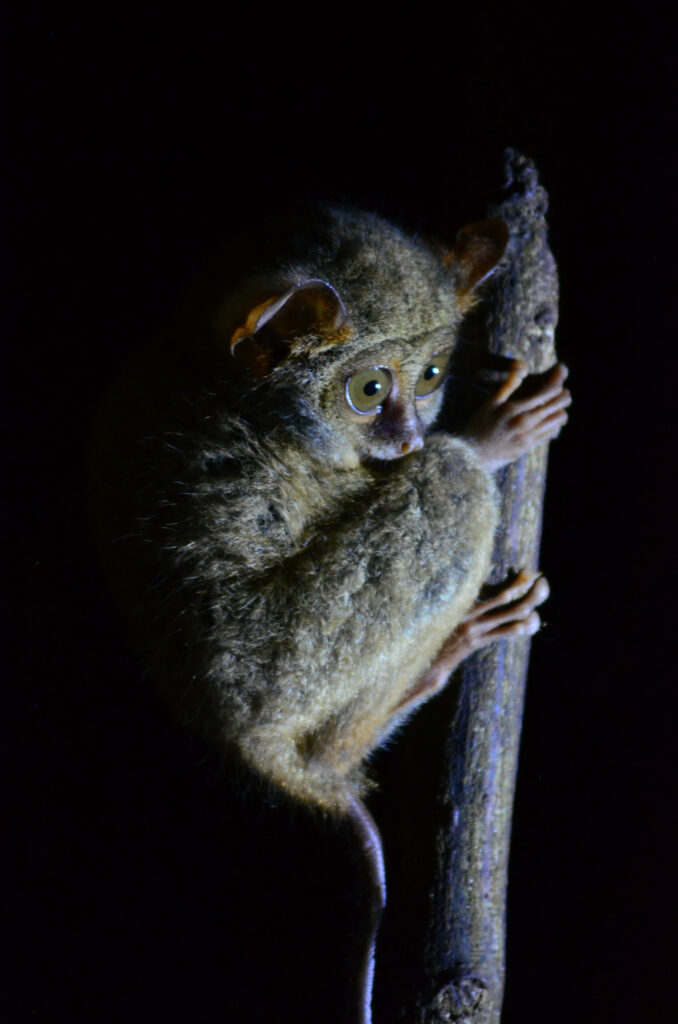
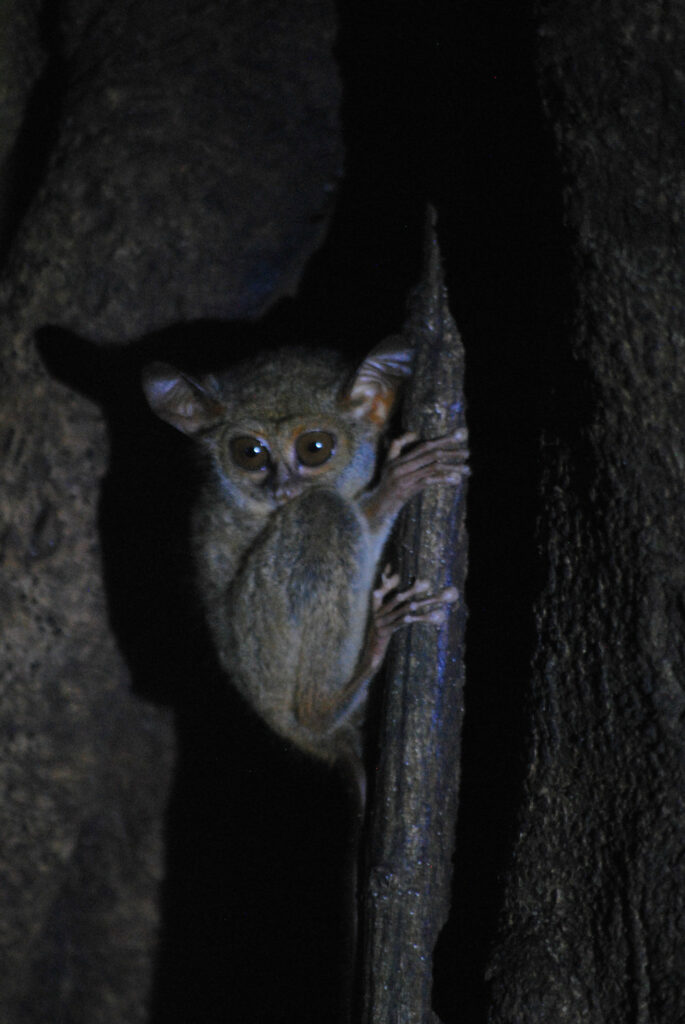
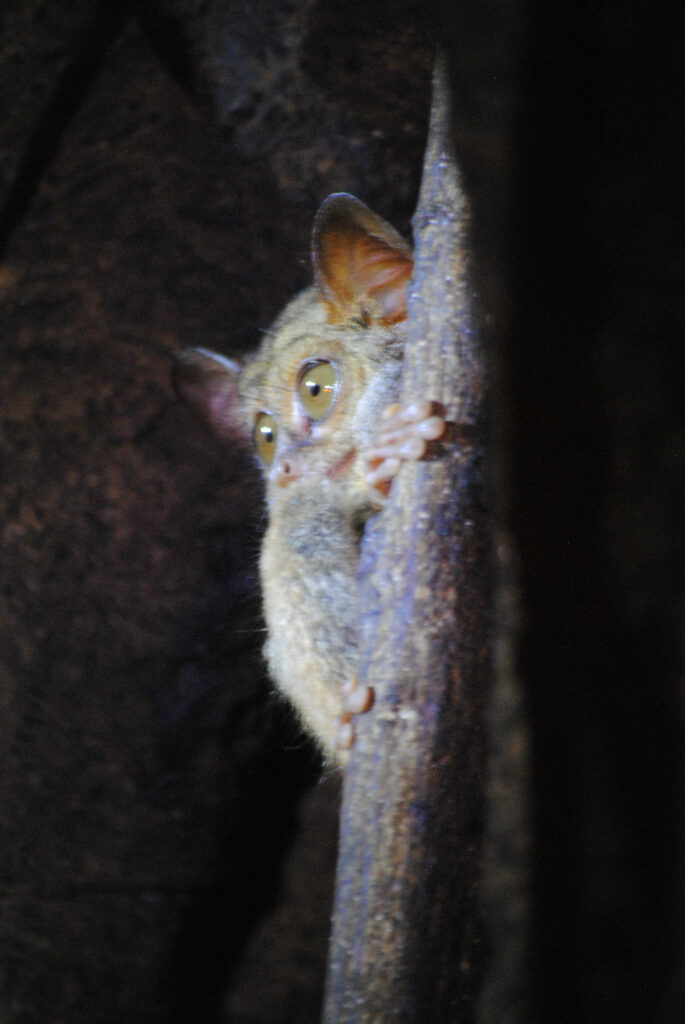
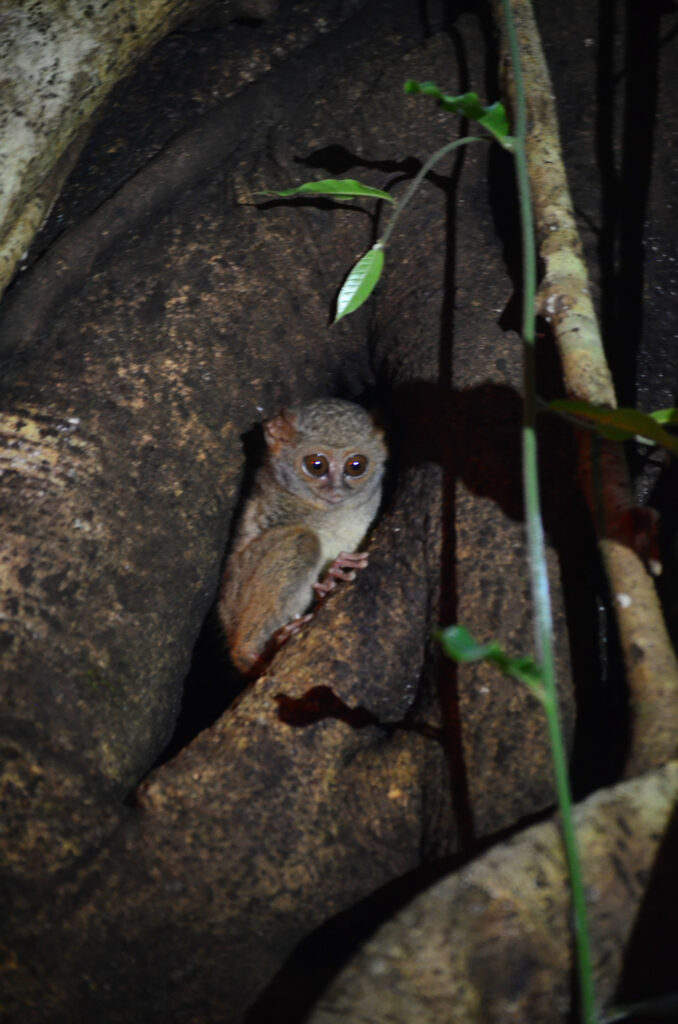
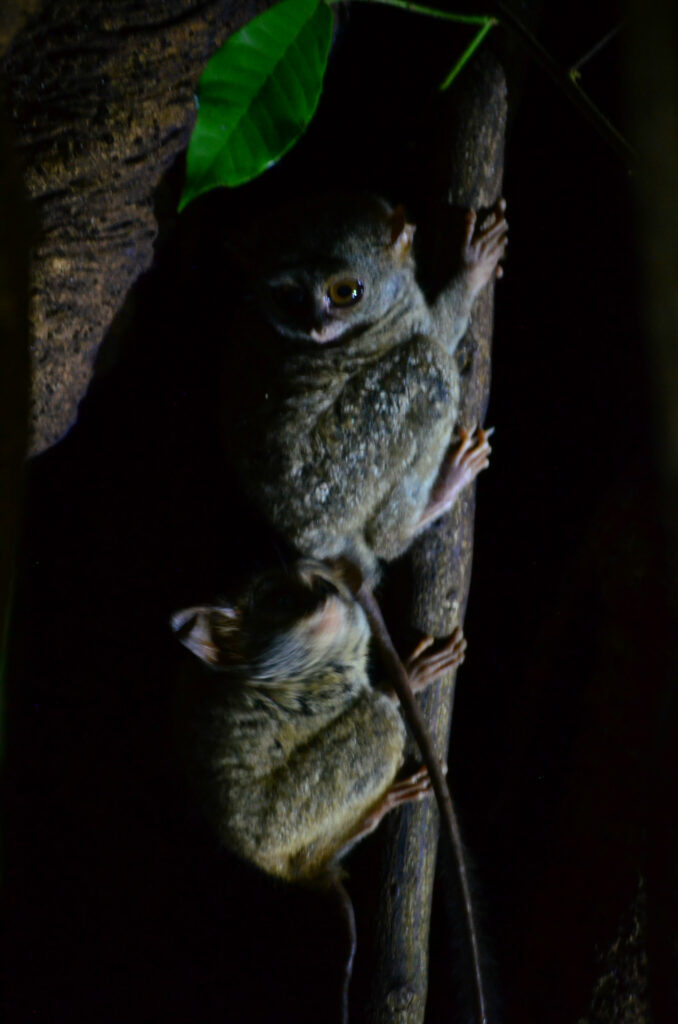
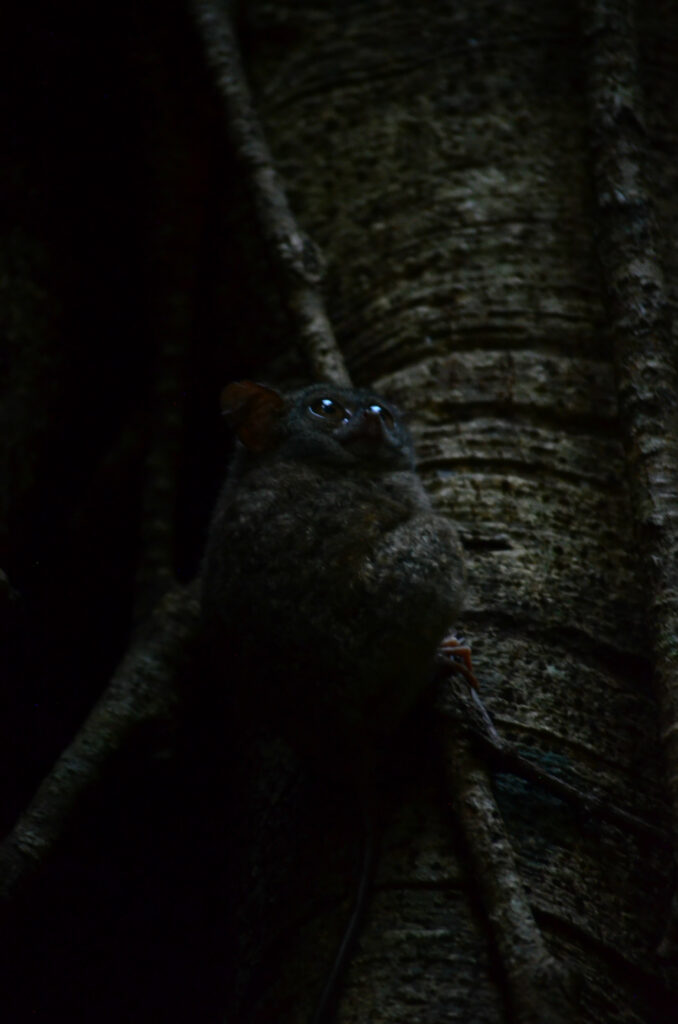

Although you can see from these pictures that this might be one of the most adorable creatures you’ve ever seen in your life, what you can’t tell is that a tarsier can fit in the palm of your hand AND literally springs from branch to branch like the cutest, littlest Popple (or, if you are not a child of the 80s, like it is traveling around on a teeny tiny pogo stick). Tarsiers are nocturnal, so we had to go on an evening hike to the tree that they sleep in right before they woke up. Once they wake up, they bounce around their sleeping tree for about 15-20 minutes before they head out for the rest of the night to hunt for insects.
Even though tarsiers are the main attraction at Tangkoko, the proper way to “do” the park is to take an evening hike to see the tarsiers and then take an early morning to hike to see the rest of the park’s animals. Nothing is a guaranteed, but the other interesting animals you are likely see here are crested black macaques and bear cuscus. We lucked out and managed to see both those animals PLUS a poisonous viper that blended in so well with the leaves that someone in our group stood four inches away from it for several minutes before our guide spotted it and then frantically gestured for him to move away. There is also a part of the park with caged teeny tiny baby sea turtles that are endangered so they are cared for until they reach a certain size and then released into the wild. Doing this increases the likelihood that the turtles will survive into adulthood.
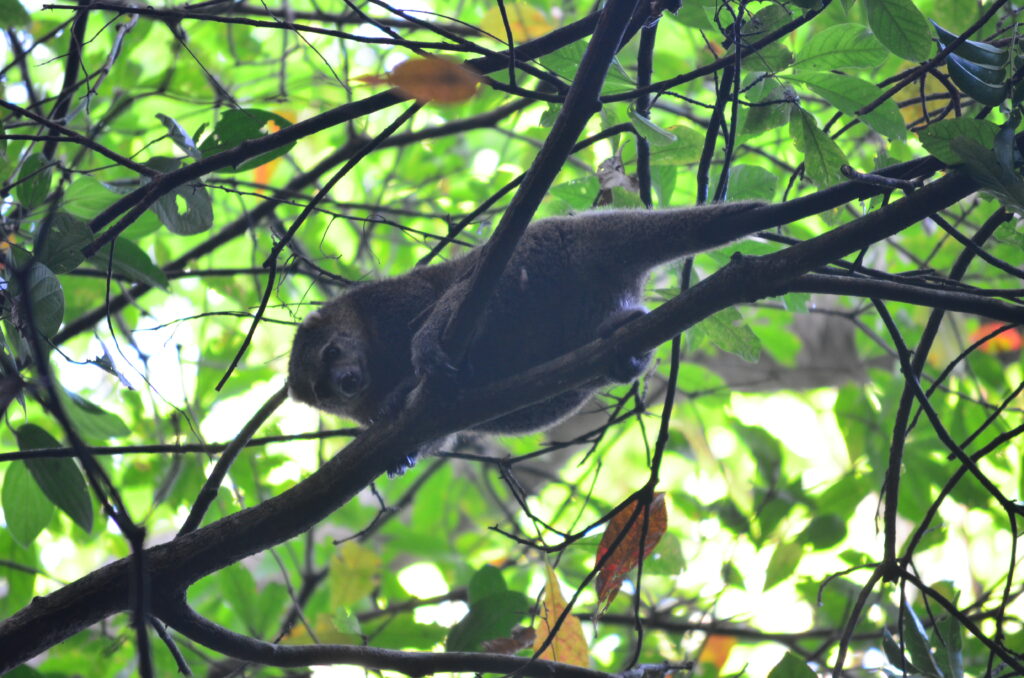
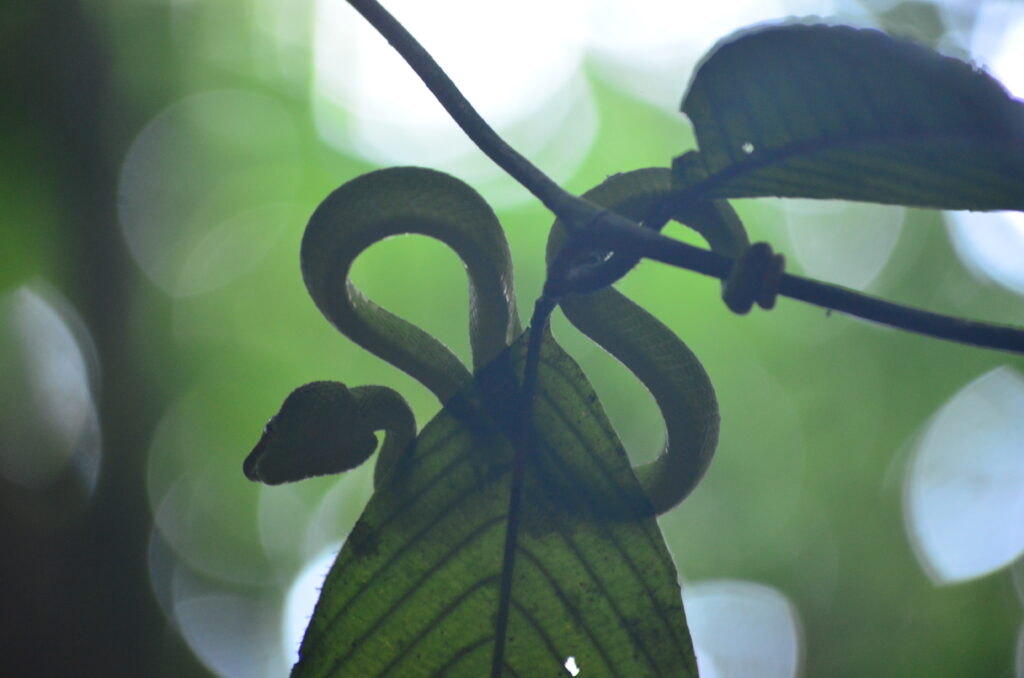
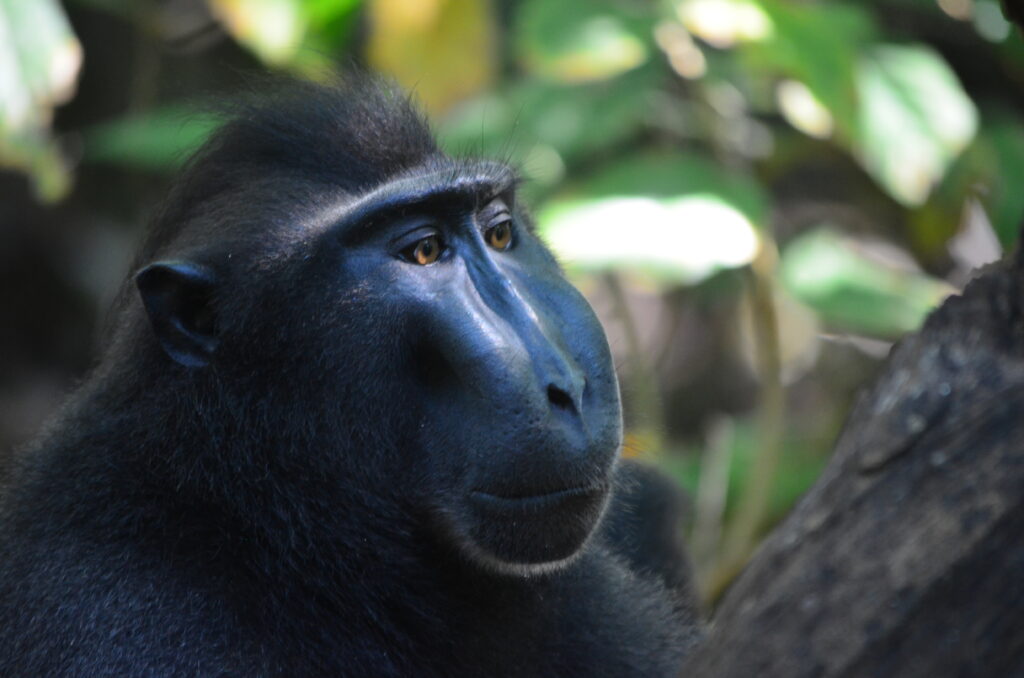
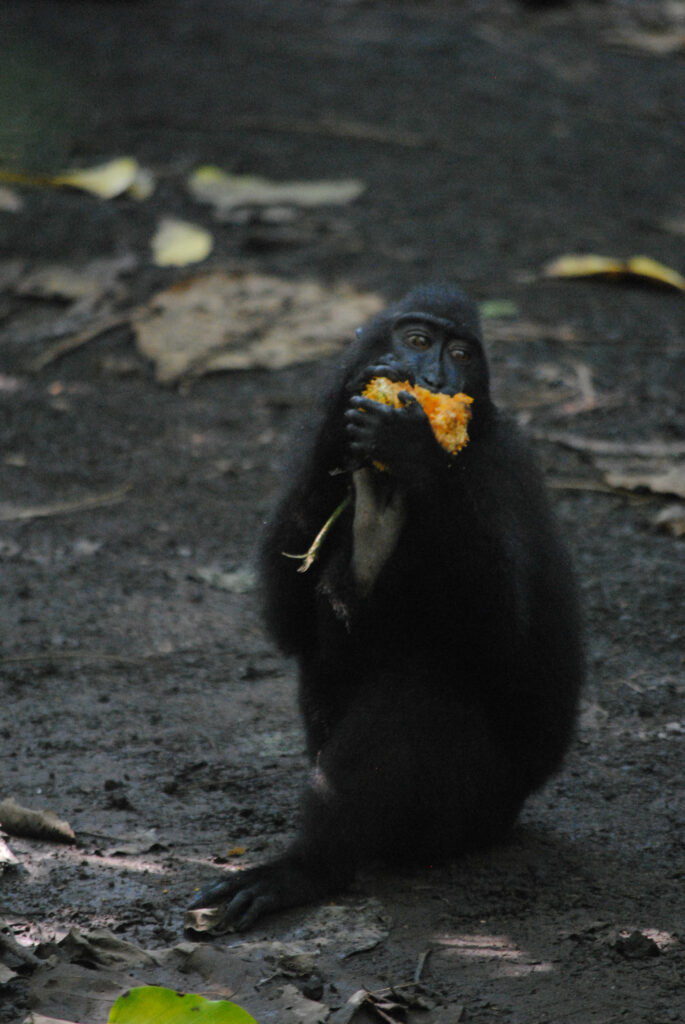
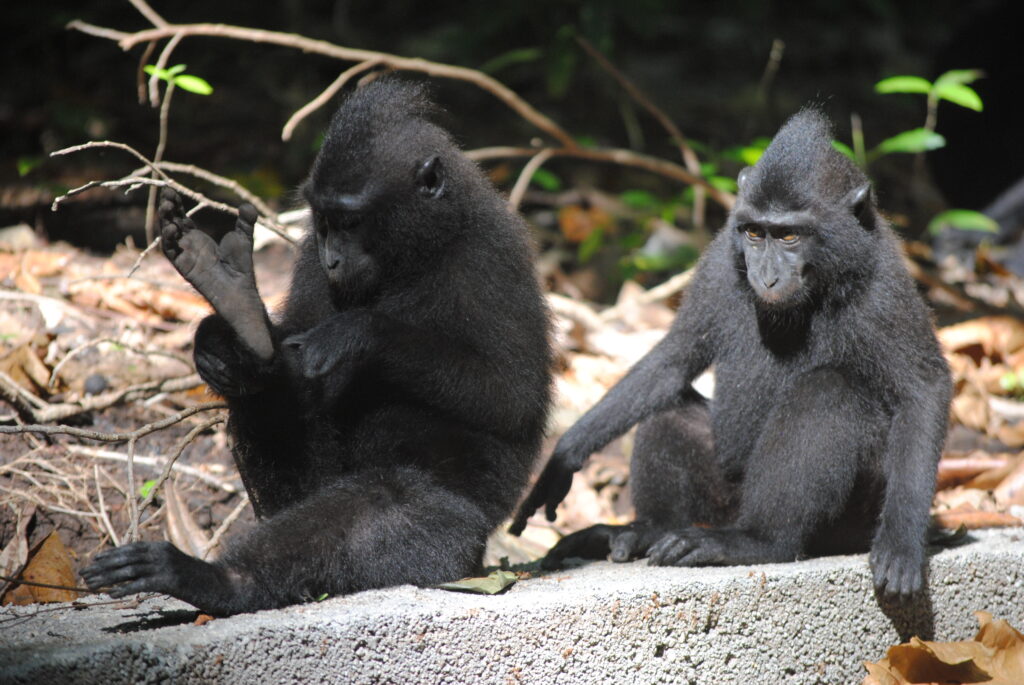
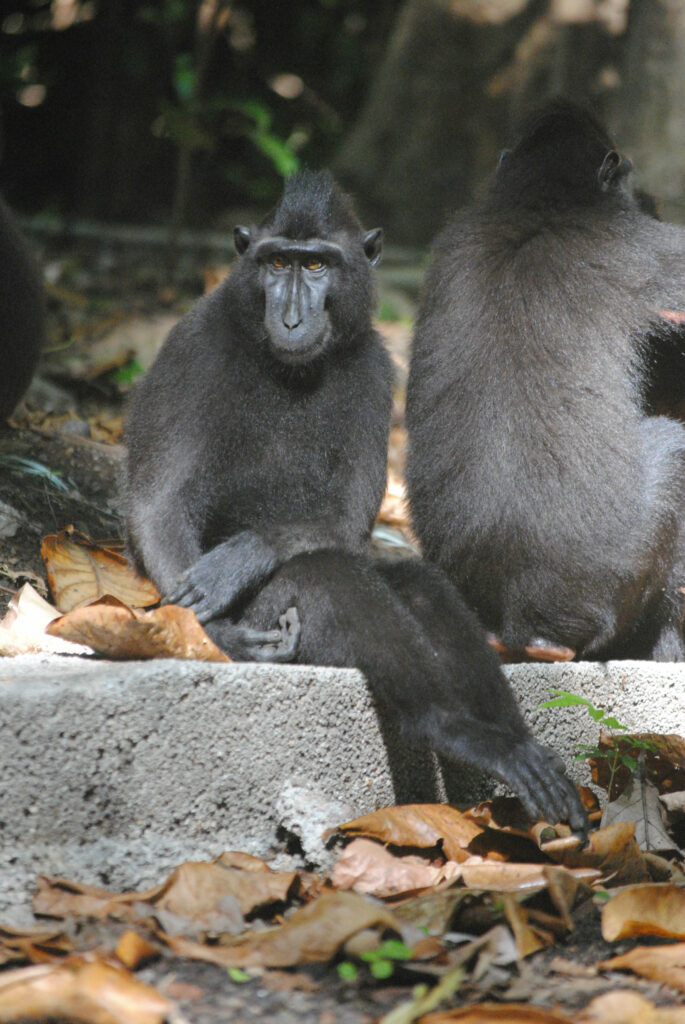
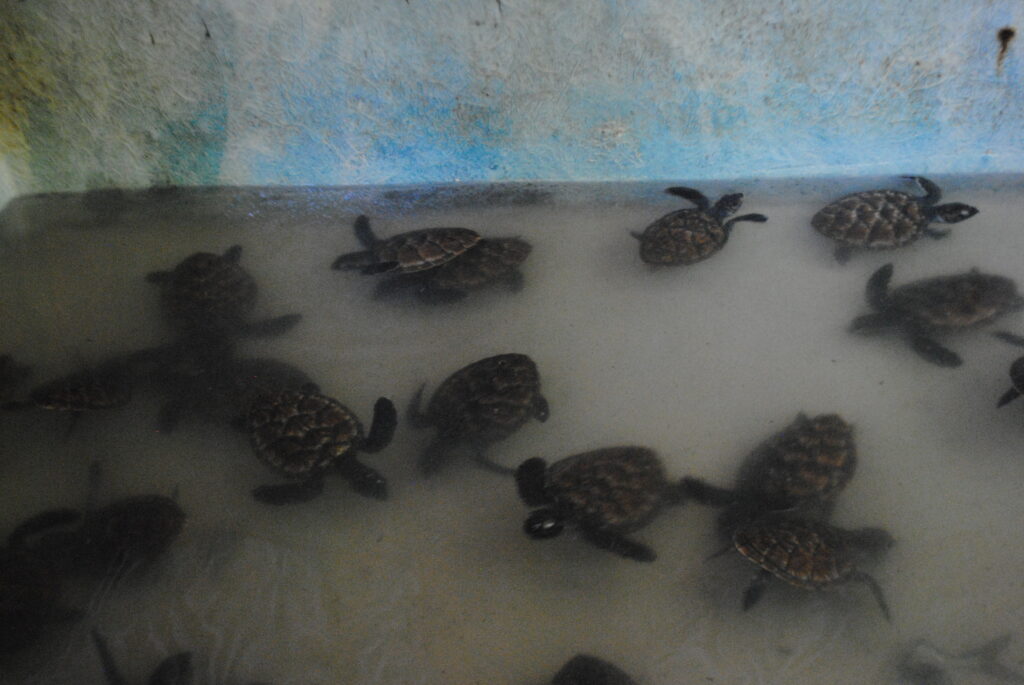

Indonesia was proving to be exactly what we had hoped for, but we still had one last important stop, Tomohon, to hike an active volcano. The main volcano to hike, Gunung (Mount) Lokon, was too active while we were there so it was “not recommended” that we climb it. It was, however, perfectly fine for us to stay in a guesthouse right smack dab at the very base of it. Apparently. Fortunately for us, Tomohon is home to more than one active volcano and we were able to hike to the top of Gunung Mahawu instead. Despite getting caught in a torrential downpour after we had reached the top, it was a really nice hike and we didn’t encounter another soul almost the entire time.
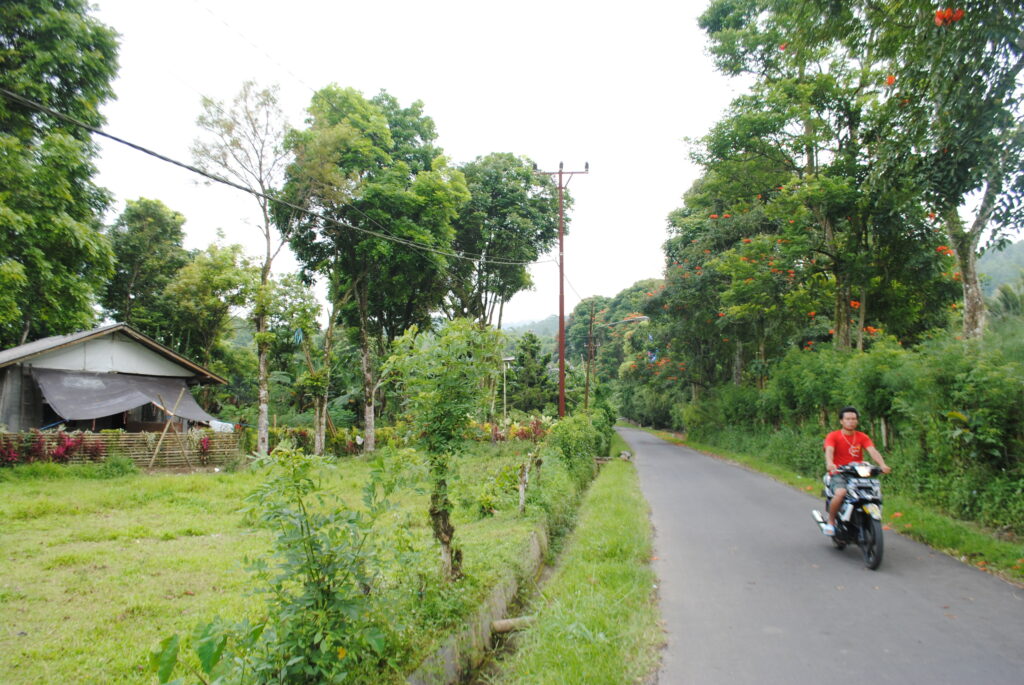
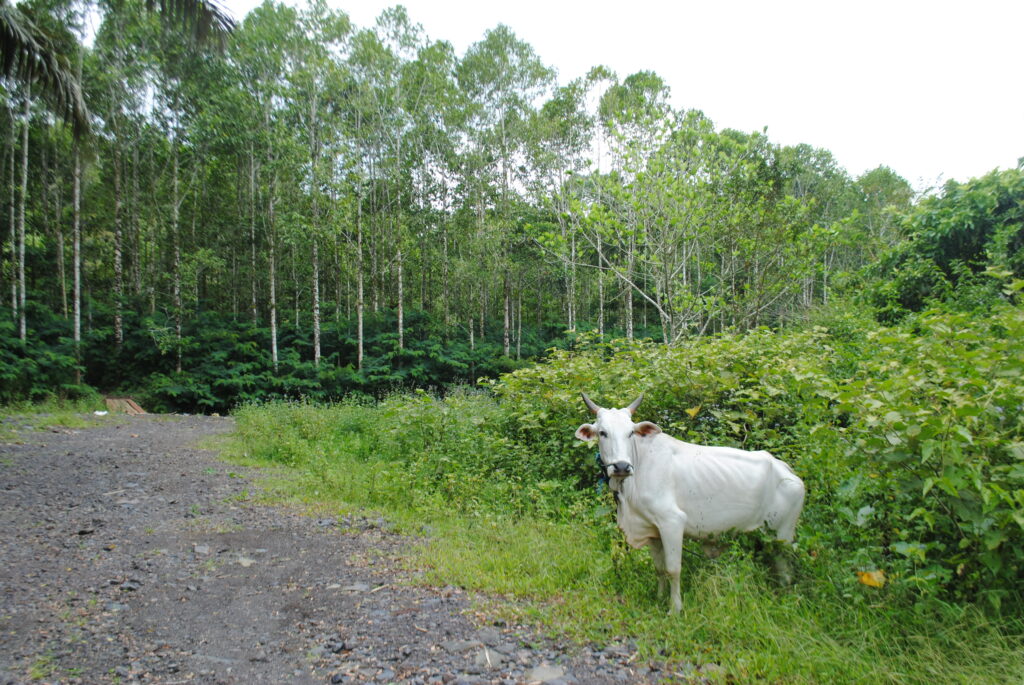
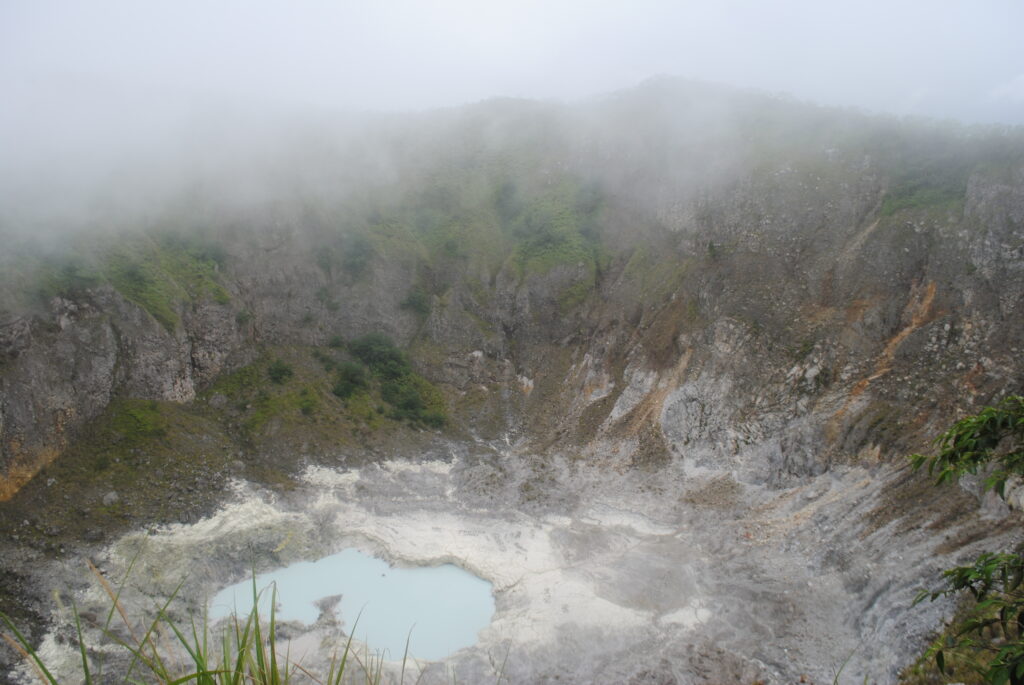
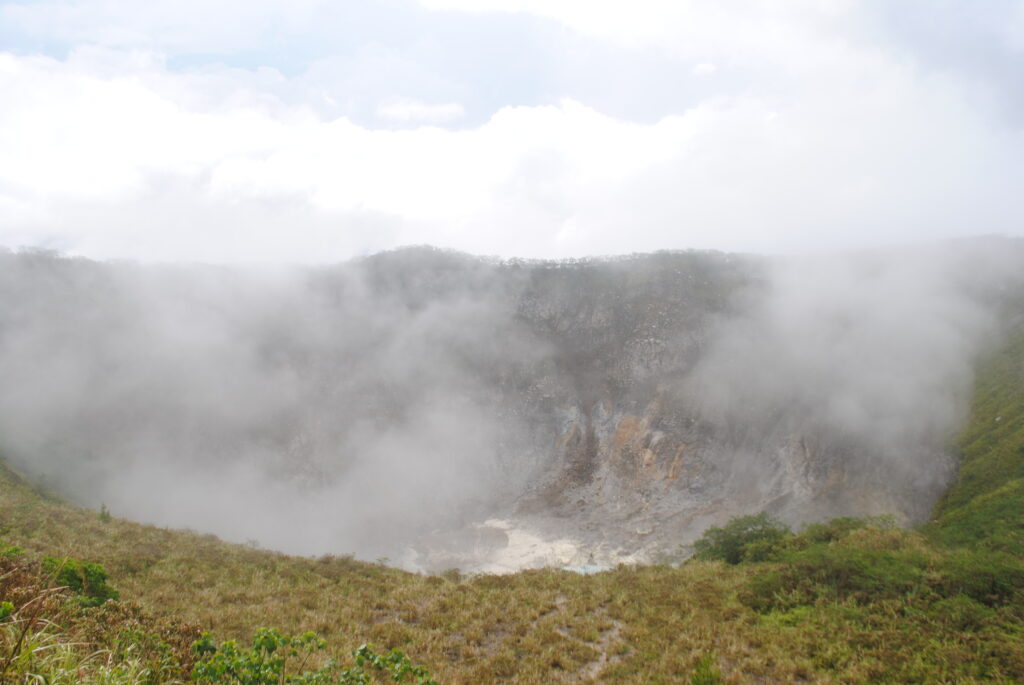

Tomohon is quite green and beautiful, but there is not much to do there. Aside from hiking the volcano, the highlight for us was stumbling across a bakery/restaurant that was completely Hello Kitty themed. It was very surreal to be in a place with very few proper sit down restaurants, but which happened to have a huge one decorated from floor to ceiling with Hello Kitty.
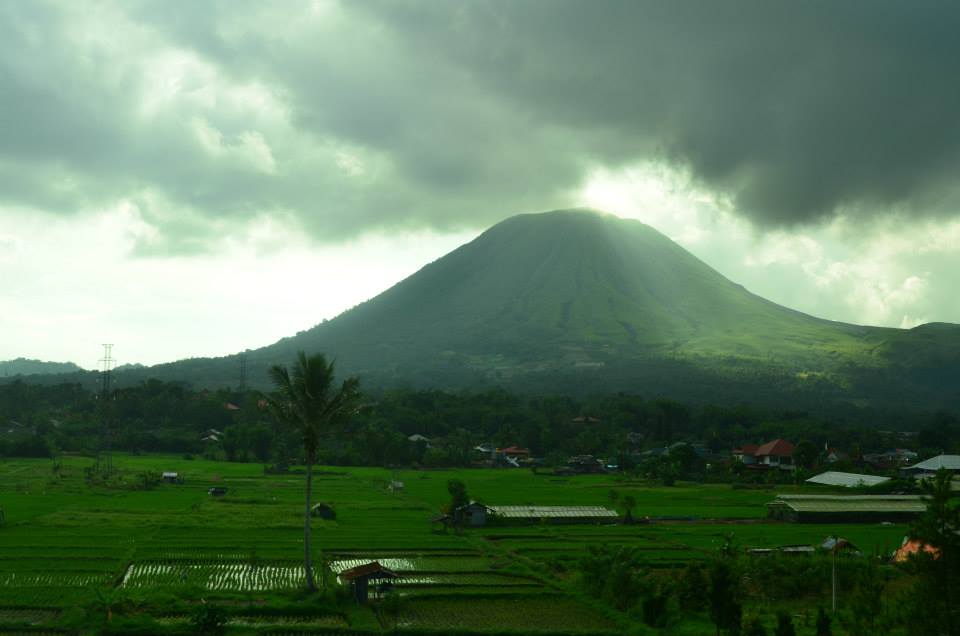
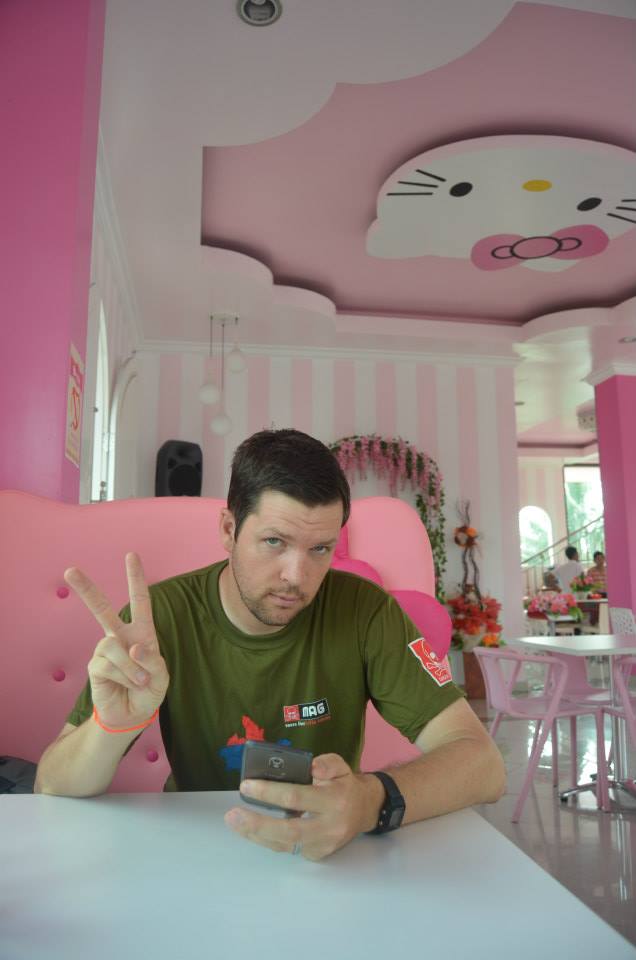
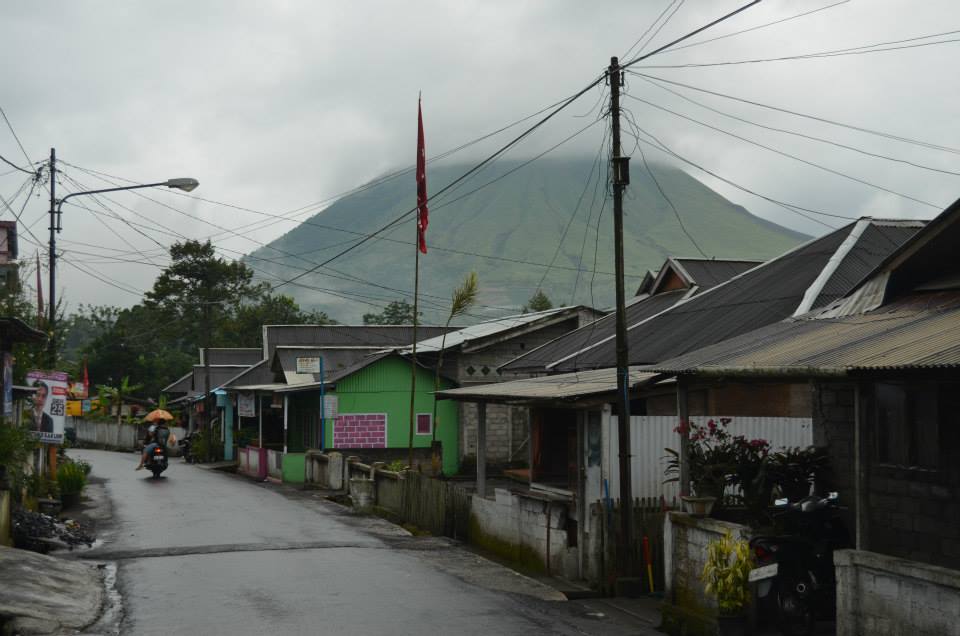
One final thing to note about Sulawesi: it had the most ingenious form of public transportation we’d ever seen. Small, bright blue vans with no doors that fit no more than 6-8 people called mikrolets drive around on various routes. You can flag down these vans at any point on the route and they will similarly drop you off anywhere along that route that you ask them to, all for a fixed, cheap rate. It seemed like mikrolets are used within cities and towns while public buses are used for longer distances between towns. It was also interesting to observe that there weren’t any autorickshaws on Sulawesi like we saw everywhere else in Southeast Asia, only taxis. The mikrolets gave us the convenience of an autorickshaw (i.e. you get on and off wherever you want), but freed us from the hassle of bargaining for the cost of the ride since mikrolets charge everyone the same fixed price.
Indonesia was one of the most beautiful places we visited during our entire trip. It was also nice that the primary focus of everything we did there was nature related. Although we made an effort in every country to do some nature-related activities, Indonesia was really the first and only country we visited on our where we did not spend any time in a city or have any urban activities on the agenda. It was refreshing and definitely a lesson learned for us when planning our future travel.